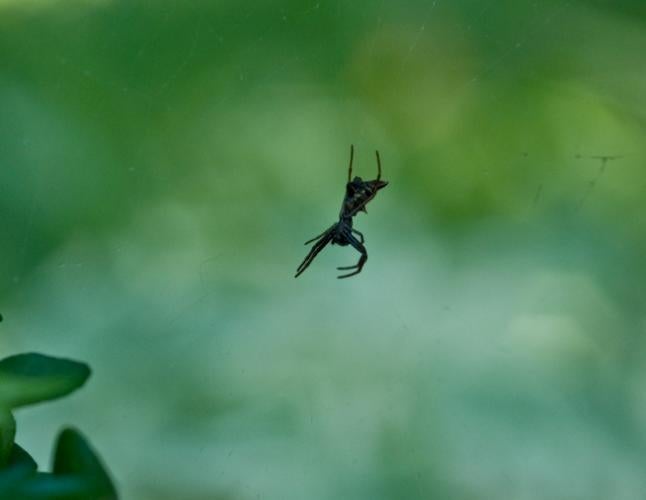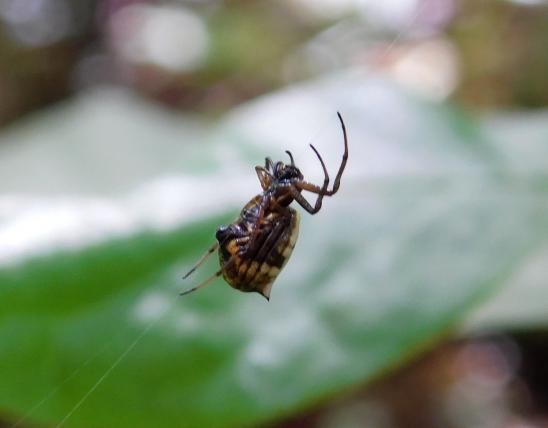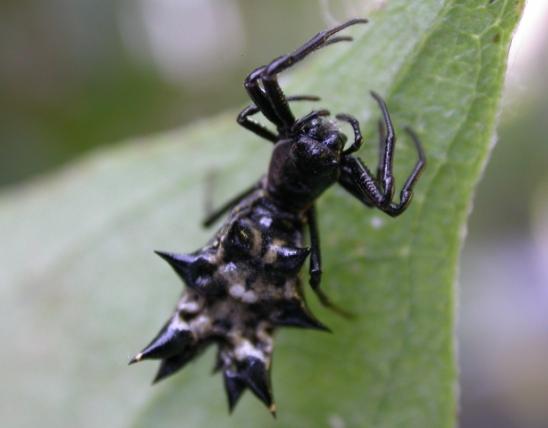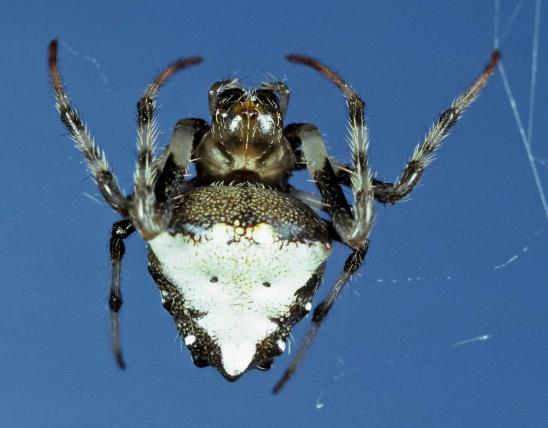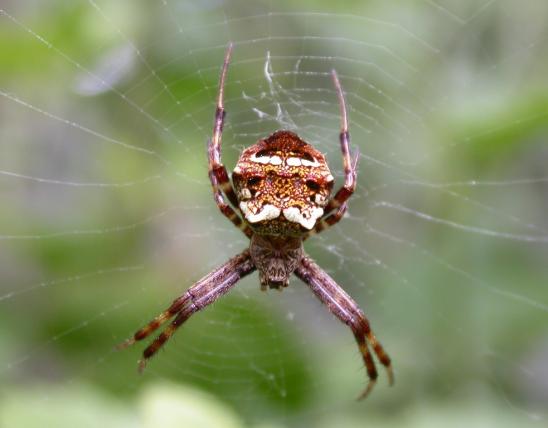
The arrowshaped micrathena is an orbweaver. The females spin intricate, circular webs and are commonly seen resting in their webs. The males are small and rarely seen. Females have striking reddish, black, and yellow colors. The top surface of the abdomen is yellow. There are 3 pairs of tubercles that are tipped with black and red at the base. The pair of tubercles at the back end of the abdomen are rather large and point outward, forming two corners of the triangular (“arrow-shaped”) body. With a little imagination, this small spider suggests a hard-rocking "Flying V" electric guitar.
Similar species: Missouri has three species of micrathena spiders, as a group called spiny orbweavers.
Length: to about ½ inch (excluding legs).
Statewide.
Habitat and Conservation
Open woods, also common in yards.
Food
Micrathenas capture small insects in the sticky strands of their webs, then deliver a bite of venom sufficient to subdue and to begin digesting the interior of the insect. Then they wait, returning to the prey to ingest its liquified contents. The close spacing of the circles in micrathena webs enables them to specialize in tiny flying insects such as mosquitoes and leafhoppers. Micrathenas are ferocious predators to small insects, but they are completely harmless to humans.
Life Cycle
Like many spiders, micrathenas live for only a year. They hatch from egg cases in spring, disperse, and undergo molts as they grow. Females are twice as big as males and are the ones most of us see, for they are the ones that spin conspicuous webs. Males visit females in their webs, and courtship often proves fatal to them; their bodies provide nourishment to their mate and future offspring. Females spend the season eating insects and creating egg cases, then die on the onset of cold weather.
Human Connections
Spiders may be creepy, but they do us a tremendous service in natural, nontoxic pest control. Micrathenas reduce the numbers of many obnoxious flying insects. Some people think arrowshaped micrathenas are cool-looking, while others think they're hideous. Humans are both repelled and attracted to "scary" animals like spiders, snakes, and so on. The emotional response they evoke in us makes them powerful symbols in storytelling, movies, science fiction, and poetry. Regardless of our feelings about them, they play important roles in nature.
Ecosystem Connections
Micrathenas and other spiders help control populations of insects, particularly flying insects, and leafhoppers that feed on plants. Additionally, many birds steal trapped insects from spider webs to eat for themselves. Hummingbirds, vireos, and warblers harvest spider webbing to use in building their own nests.

